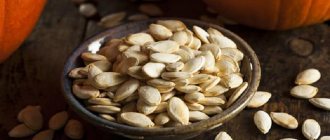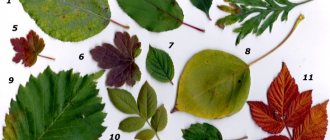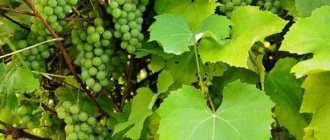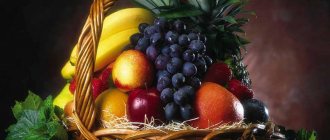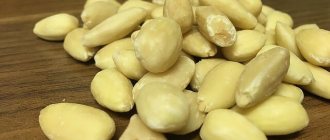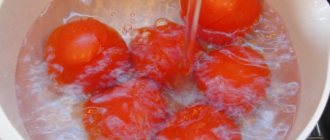Hello! In this article I will tell you how to quickly peel the hard skin of a pumpkin, remove the pulp from it and prepare pumpkin seeds. Pumpkin is a tasty and healthy fruit, but for many people peeling it is a real problem. Previously, every time I started cooking pumpkin, I experienced real stress before cutting it. But over time, I developed my own system and began to remove hard skin quite quickly and easily. I tried different methods from the Internet, and I’ll tell you about them too. And I give simple step-by-step instructions with photos: with it you can handle even the hardest-barked pumpkin in 7 steps. Forward!
Where do I start preparing all pumpkin dishes without exception? Yes, from her cutting. Precisely cutting, because I have never come across a fruit with a soft, tender, pliable crust. Regardless of the variety. Always a hard peel, and even wavy)).
Of course, the hardness differs depending on the variety, but over time I learned to cope with the hardest-barked specimens in 5-7 minutes. If it's not a giant.))
Different grades for cleaning
So, I stock up on a good mood. I have a fox with a bun on a stump; my child made it out of clay.)) And she is also red, I took her for support.
Peel softening methods
I experimented with pre-preparing fruits before cleaning. I read all these methods on the Internet; my mother or grandmothers did not teach them to me. Two methods are thermal and one method is water.
First: soaking the pumpkin in water
I soaked a pumpkin that had been stored at room temperature for a long time and its peel had become woody, that is, dried out. ))
I placed the pumpkin in a bucket of cold water overnight: relatively large fruits do not fit in an ordinary basin. And left it to soak overnight.
In the morning, the skin absorbed the water and seemed younger and fresher. And more pliable. Next, I cleaned it according to the standard step-by-step procedure. The method has been tested and you can use it!
Second: heat treatment in the microwave
I placed a small fruit in the microwave. And she turned it on at maximum power for 2 minutes: I was afraid to leave it on longer. In general, I took the pumpkin out of the oven hot and there was even something crackling inside it. It was scary. :)
I cut it with a serrated knife, and then the peel was surprisingly easy and quick to peel all around using a vegetable peeler. I didn't even have to cut the whole fruit into small pieces. All the flesh inside was warm, but still firm. The method is good, I liked it, suitable for small pumpkins.
Third: oven treatment
Place the fruit in an oven preheated to 180 degrees for 3 minutes. Then I take it out and read it step by step. The difference from the microwave is that the pulp inside did not heat up and remained cool.
I also liked this method; it can be used for hard-barked varieties or specimens that have been stored for a long time. But still, I would use thermal processing methods only if I then turn the pumpkin into puree, bake, and boil. In case I hold it too long.)) And it is clear that after heat treatment such fruits will not be stored for a long time.
Wait, what about the seeds?
Useful properties of pumpkin
Before you peel the hard skin of the pumpkin and prepare a delicious dish from it, you need to learn about the beneficial properties of this vegetable and its contraindications. This is necessary to ensure that eating pumpkin does not cause negative consequences and does not affect your health.
This orange vegetable includes a number of important substances that ensure the normal functioning of all body systems.
Among the most important it is worth noting the following:
- vitamins A, B, E, PP, F, D, C;
- magnesium;
- iron;
- potassium;
- calcium;
- cellulose.
All these beneficial substances help cope with diseases of the gastrointestinal tract and improve digestion. In addition, pumpkin can become an indispensable product in the treatment of diabetes, atherosclerosis, kidney disease and the cardiovascular system.
Among the negative factors affecting the human body, it is worth highlighting the possibility of allergic reactions, bloating, and colic. This vegetable should not be consumed by people suffering from low acidity of gastric juice and severe diabetes.
Rules for storing pulp
Properly storing a pumpkin is no less important than properly cleaning it. The taste of the vegetable and the dish in which it is used will depend on this. There are many storage methods, but you should focus on the following:
- If you do not use the whole pumpkin, but only half of it, then the remaining part does not need to be cleaned of seeds, hard fibers and peel. This way the vegetable will be better preserved and will not lose its beneficial properties. In this form, pumpkin can be stored for no more than 5 days. After this, the pulp will begin to become sluggish and lose its taste.
- If necessary, you can store peeled and chopped vegetables. To do this, put all the pieces in a plastic bag and put them in the refrigerator. For larger pieces it is better to use cling film. The product can be stored in this form for no more than 3 days. As a rule, the edges of the vegetable will wilt, so they must be carefully cut off before further use.
- You can also store peeled pumpkin in the freezer. There she is able to lie much longer and not lose her vitamins and microelements. Before placing in the freezer, wrap the pumpkin in a plastic bag or wrap it in cling film.
Peeling a pumpkin is a rather labor-intensive process, and without knowing some secrets it can turn into real torture. To prevent this from happening, you need to take into account all the advice of professionals - they will allow you to easily peel the vegetable and prepare a delicious dish from it that will appeal to all members of your family.
Simple cleaning methods
Professional chefs from around the world have come up with several simple ways to properly clean a pumpkin. All of them are quite easy and do not require special skills or time from you. Not only an experienced housewife, but also a beginner can easily cope with such work.
Traditional method
This method of cutting a pumpkin is the simplest and most frequently used. It allows you to quickly and easily separate the skin from the pulp with minimal losses. Each stage of the work must be performed very carefully so as not to cut yourself with a sharp knife. If everything is done correctly, then in just a few minutes you can get pulp ready for further preparation. To complete this job you will need a wooden cutting board, a large sharp knife and a tablespoon.
The process of peeling and removing pumpkin seeds using the traditional method is very simple and consists of the following steps:
- First of all, the vegetable must be thoroughly washed with cold tap water.
- Then wipe with a piece of cloth or dry with paper towels. This operation will help make the vegetable not so slippery and simplify the whole process.
- The prepared pumpkin is placed on a cutting board with the tail facing up.
- Then it is cut into two parts using a sharp and wide knife.
- Using a tablespoon, remove all the seeds and the fibrous part of the fruit from the two halves.
- The removed mass is transferred to a bowl. The seeds are removed from it, washed with water and dried in the sun. After this, they are eaten as a separate product.
- Each pumpkin halves is cut into several wide slices. This is necessary so that it is convenient to hold pieces of fruit in your hands and peel them.
- Using a well-sharpened knife or vegetable peeler, remove a thin layer of peel from each slice. This is done with short and sharp movements from top to bottom.
- Then the remaining unedible fibers are removed with a spoon.
- If necessary, the pumpkin is cut into smaller pieces and cooked. In addition, you can wrap the vegetable in cling film and put it in the refrigerator. In this state it can be stored for quite a long time.
Microwave
If you bought a pumpkin a long time ago and it stayed with you for more than a week, then its skin has become even rougher and more difficult to remove. In this case, various modern devices, such as a microwave, come to the rescue. With its help, you can slightly soften the top layer of the fruit and simplify the process of cutting it. To do the job you will need a wide knife with a well-sharpened blade, a large cutting board, a microwave and a tablespoon.
To clean or not to clean
For housewives wondering whether it is necessary to peel vegetables, there is good news: it is not necessary. It all depends on the dish you are going to prepare from it. And you can prepare many such dishes, from the well-known millet porridge, to filling for pies, salads and meat dishes.
The skin of baked pumpkin peels off easily after cooking.
You can simply bake the pumpkin in the oven, sprinkle it with sugar or water it with maple syrup, you can stew it in the oven on a baking sheet, adding a little water, you can grate it - in all these cases there is no need to remove the skin at all. When baked or stewed, it will easily come off after cooking; just throw away any remaining grated crust. There are recipes when dishes are prepared in a whole pumpkin; here there is no question of cleaning.
Cooking in a pumpkin eliminates the need to remove the hard skin
What kind of fruit is this vegetable
Pumpkin has been known for more than 5 thousand years. The place of origin is Central and South America, where the ancient Indians began to use it. The fruit was brought to Russia in the 16th century.
The nutritional benefits of pumpkin can hardly be overestimated
There are many varieties of pumpkin. They differ in color and size, shape and purpose. There are decorative varieties whose pulp is inedible, but the unusual shape and color of the fruit can decorate a garden plot or winter garden. Some varieties are grown for livestock feed or for seeds. Currently, three species are most often cultivated:
- large-fruited;
- hard-barked;
- nutmeg.
Large-fruited
The name of these varieties speaks for itself. The fruits are large in size and weight, and they are also the sweetest. In some varieties, the sugar content reaches 15%, which is more than the sweetest watermelon. The skin of these pumpkins is quite thin, and they are stored well in a city apartment.
The weight of this species can reach a hundredweight; there is a known case of growing fruits weighing more than 500 kg. The fruits are usually round or oblong. Inside there is a large cavity with seeds.
Large-fruited varieties include “Stofuntovaya”, “Titan”, “Kupchikha”, “Teschenka” and others. Varieties are resistant to low temperatures.
Some pumpkin specimens can reach several hundred kilograms
Hardbark
It is smaller in size than the large-fruited one and has a very hard peel, more like a nut shell. This species matures quickly. Already at the end of August - beginning of September they can be eaten. Hard-bark pumpkin seeds are the most delicious.
In addition to being eaten, they are also valuable as raw materials for making dishes. That's exactly why housewives don't like to deal with them so much - the hard shell - has found application in this area. The dishes made from it are light, durable and environmentally friendly.
The flesh of hard-rind pumpkins is looser and can be quite rough. There is a variety called “Spaghetti” with fibrous pulp that actually looks like spaghetti. Another interesting variety is gymnosperm. Pumpkin seeds of this variety do not have an outer hard shell and are very tasty. This variety is not stored for a long time due to the fact that the seeds can germinate inside the pumpkin itself.
When stored for a long time, the skin of the pumpkin thickens and hardens.
Muscat
This pumpkin is also called butternut. It has a bottle or pear shape. Almost all of it consists of bright orange pulp with a nutty flavor, dense and oily. There are few seeds and they are located in a small cavity in the thickened part of the fruit. Butternut squash is considered the most delicious and vitamin-rich of all types.
To clean or not to clean
For housewives wondering whether it is necessary to peel vegetables, there is good news: it is not necessary. It all depends on the dish you are going to prepare from it. And you can prepare many such dishes, from the well-known millet porridge, to filling for pies, salads and meat dishes.
The skin of baked pumpkin peels off easily after cooking.
You can simply bake the pumpkin in the oven, sprinkle it with sugar or water it with maple syrup, you can stew it in the oven on a baking sheet, adding a little water, you can grate it - in all these cases there is no need to remove the skin at all. When baked or stewed, it will easily come off after cooking; just throw away any remaining grated crust. There are recipes when dishes are prepared in a whole pumpkin; here there is no question of cleaning.
Cooking in a pumpkin eliminates the need to remove the hard skin
What kind of fruit is this vegetable
Pumpkin has been known for more than 5 thousand years. The place of origin is Central and South America, where the ancient Indians began to use it. The fruit was brought to Russia in the 16th century.
The nutritional benefits of pumpkin can hardly be overestimated
There are many varieties of pumpkin. They differ in color and size, shape and purpose. There are decorative varieties whose pulp is inedible, but the unusual shape and color of the fruit can decorate a garden plot or winter garden. Some varieties are grown for livestock feed or for seeds. Currently, three species are most often cultivated:
- large-fruited;
- hard-barked;
- nutmeg.
Large-fruited
The name of these varieties speaks for itself. The fruits are large in size and weight, and they are also the sweetest. In some varieties, the sugar content reaches 15%, which is more than the sweetest watermelon. The skin of these pumpkins is quite thin, and they are stored well in a city apartment.
Drying pumpkin seeds in the oven
You can dry pumpkin seeds in the oven as follows:
- First you need to bring the temperature in the oven to 60-80 degrees.
- Then grease a wide baking sheet with vegetable oil and place the seeds, dried after washing, on it.
- The baking tray must be placed strictly in the middle of the oven.
- Drying the seeds in the oven will take approximately 20-30 minutes. During this time they need to be stirred periodically.
After cooking, it is better to taste the seeds: they should not be wet or crunchy on the teeth.
After this procedure, pumpkin seeds can be stored for quite a long time. It is recommended to put them in a cloth bag and keep them in a dry and dark place.
Thanks to the vitamins A, C, E, group B, PP contained in pumpkin, microelements (potassium, magnesium and others), fiber, pectin, it rightfully occupies a leading place in terms of usefulness in human nutrition. It is suitable for children, including infants, the elderly, and pregnant women. The unique composition of the pulp makes the vegetable useful for preventing the development of cardiovascular diseases; it has a diuretic, antiemetic effect, and helps fight toxicosis of pregnant women and insomnia. The vegetable helps with anemia and exhaustion of the body, liver diseases and many other diseases. Its seeds are no less useful. Regardless of the part, the pumpkin should be properly cleaned before consumption.
